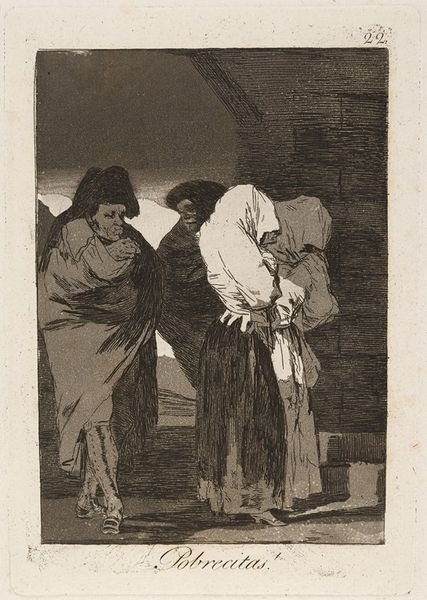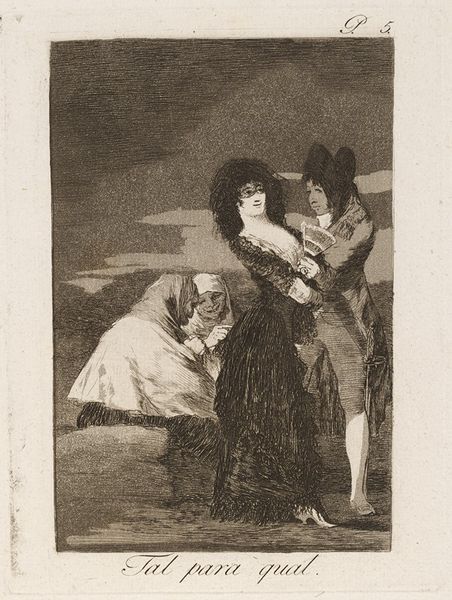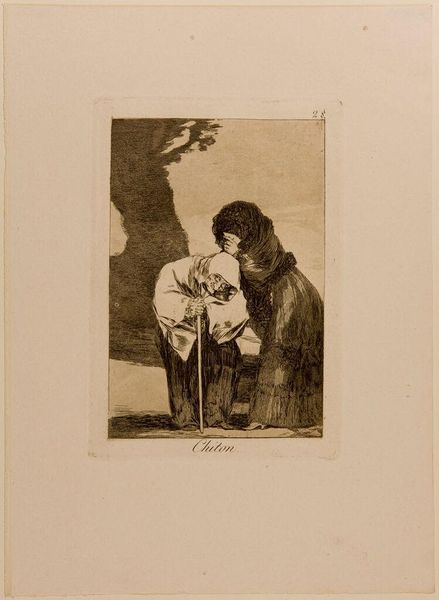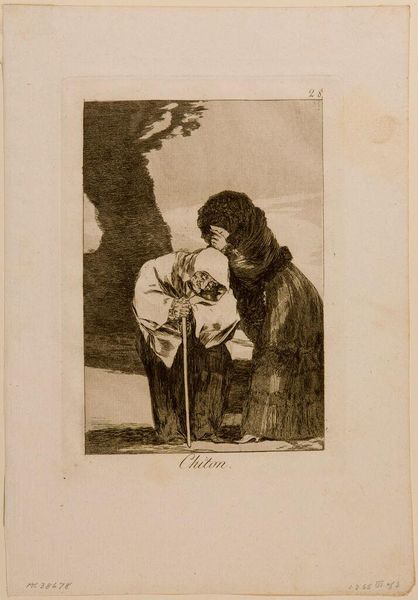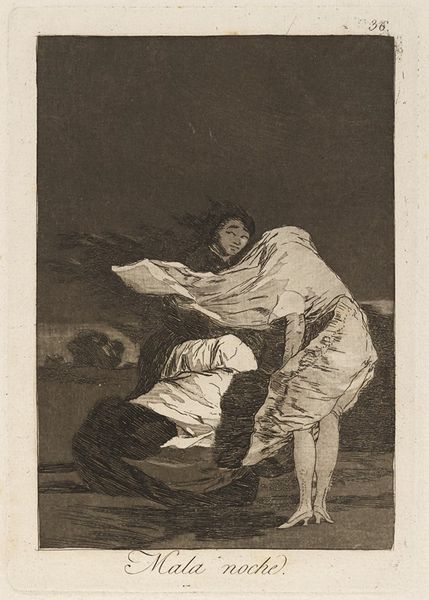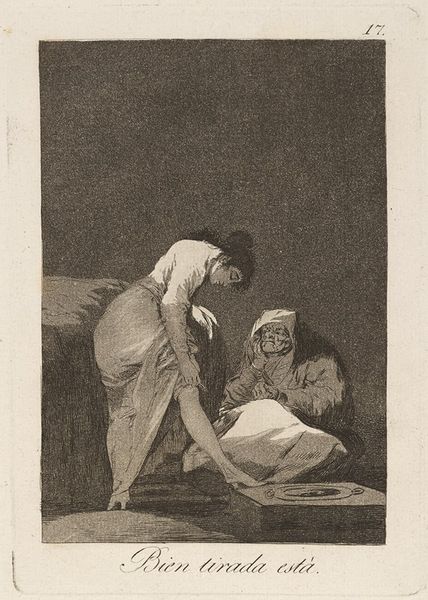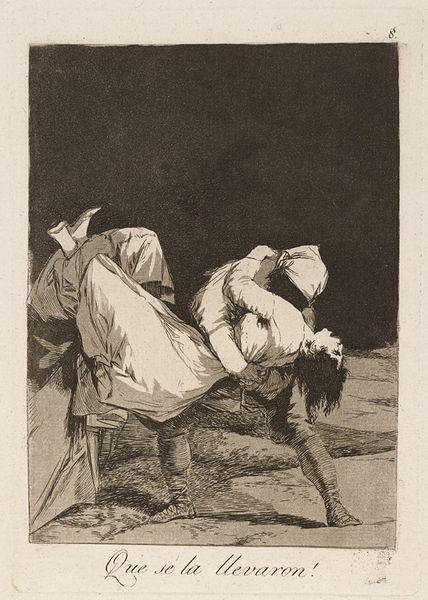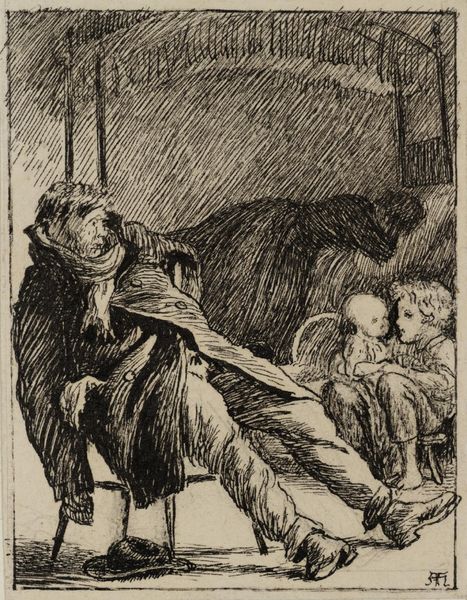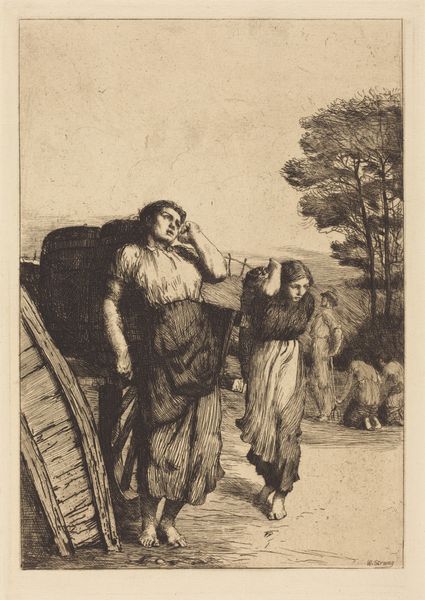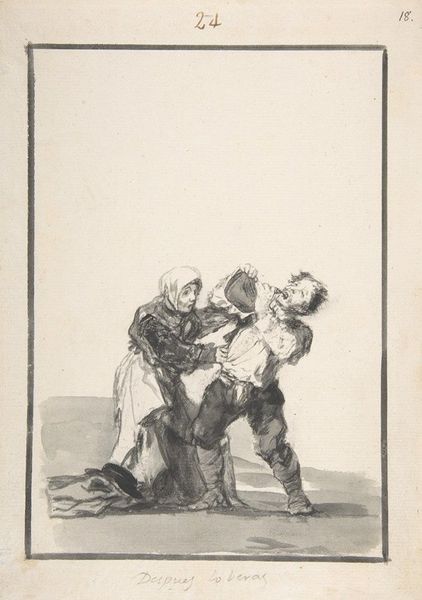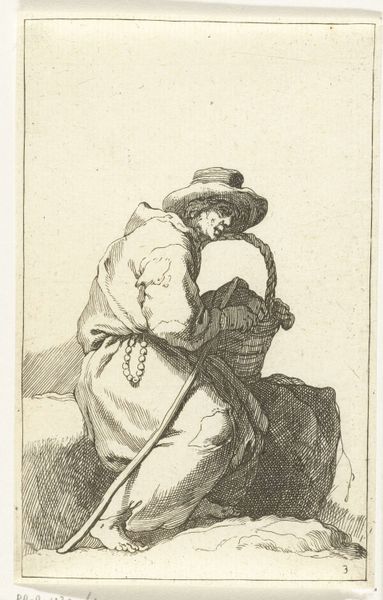
print, etching
#
portrait
#
imaginative character sketch
#
light pencil work
#
quirky sketch
# print
#
etching
#
pencil sketch
#
figuration
#
personal sketchbook
#
idea generation sketch
#
romanticism
#
pen-ink sketch
#
sketchbook drawing
#
pencil work
#
sketchbook art
Copyright: Public Domain: Artvee
Curator: This is Francisco Goya's etching titled "Chiton," created between 1796 and 1797. It presents a scene with two figures rendered in a stark, almost haunting manner. Editor: It's strikingly somber. The contrast between light and shadow accentuates a palpable sense of grief, wouldn't you say? Curator: Absolutely. Goya often employed chiaroscuro to heighten the emotional impact of his works. He used etching to create tonal variation and intricate textures. Editor: The older woman with the cane looks defeated; her face a roadmap of hardship. What statement might Goya be making about age and society? Curator: It's essential to examine Goya within his historical context. The late 18th century in Spain was a period of social and political upheaval. The Enlightenment ideals were challenging the old order. It is interesting that he presents aging women. We have to recognize that imagery, even within a seemingly simple sketch like this, served as a political voice, sometimes subverting established authority and shedding light on previously marginalized voices. Editor: And there’s this looming, imposing figure behind her, head in hand. Grief clearly connects them. Curator: Yes, there's a connection. I think there's also commentary on how those structures support each other during moments of crisis. Goya wasn’t shy about challenging conventions or exploring uncomfortable truths in his work, remember, especially his "Los Caprichos." "Chiton" can be understood as part of that larger sociopolitical narrative. It invites viewers to reflect on our perception of the aging. Editor: Absolutely. Understanding Goya's era and its tensions reframes how we approach and interpret the image. It adds necessary layers of depth, doesn't it? The weight of those layers allows us to truly appreciate Goya’s intent, particularly towards a marginalized voice.
Comments
No comments
Be the first to comment and join the conversation on the ultimate creative platform.
